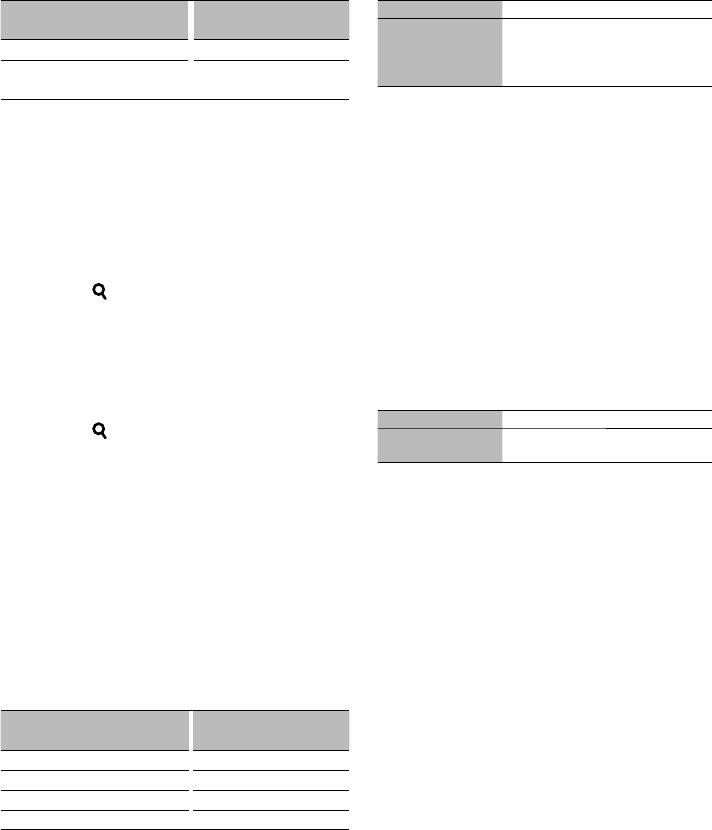
English
|
41
For operating KCA-BT200 (Optional)
For operation refer to Model-B-2 in the Instruction
Manual of KCA-BT200, and the table below.
Notation used in the KCA-BT200
Instruction Manual
Operation
[38] button Control knob
Press the [AUTO]/[TI] button. Press the Control knob for at least
1 second.
For operating KCA-BT100 (Optional)
The following control methods of the function
for this unit may be different from the Instruction
manual; therefore, refer to the following supplemental
instruction.
<Dialing by Using the Quick Dialing Function>
1. Press the Control knob. Select the display other
than “INITIAL”.
2. Press the [
] button.
3. Select the number to recall by turning the Control
knob.
4. Press the Control knob.
<Registering to the Preset Dial Number List>
1. Operation is the same. Refer to the instruction
manual of KCA-BT100.
2. Press the [
] button.
3. Select the number to memory by turning the
Control knob.
4. Press the Control knob for at least 1 second.
<Deleting a Registered Cell-Phone>
Refer to <Deleting a Registered Bluetooth device>
in this instruction manual.
<Menu System>
For how to operate Menu, refer to <Function
Control> in this instruction manual.
About display
Cell-Phone Status is displayed in the status display of
this unit.
Moreover, some displays are different from the
description of KCA-BT100 Instruction Manual.
Displays of KCA-BT100 Instruction
Manual
Actual displays on this unit
“DISCONCT” “HF Disconnect”
“CONNECT” “HF Connect”
“PHN-DEL” “Device Delete”
“P-STATUS” “Phone Status”
About the Cell-Phone
This unit conforms to the following Bluetooth
specifications:
Version Bluetooth Standard Ver. 1.2
Profile HFP (Hands Free Profile)
OPP (Object Push Profile)
PBAP (Phonebook Access Profile)
SYNC (Synchronization Profile)
For the cell-phones verified for compatibility, access
the following URL:
http://www.kenwood.com/bt/information/
⁄
• The units supporting the Bluetooth function have been
certified for conformity with the Bluetooth Standard
following the procedure prescribed by Bluetooth
SIG. However, it may be impossible for such units to
communicate with your cell-phone depending on its type.
• HFP is a profile used to make a hands-free call.
• OPP is a profile used to transfer data such as a phone book
between units.
About the Bluetooth Audio player
This unit conforms to the following Bluetooth
specifications:
Version Bluetooth Standard Ver. 1.2
Profile A2DP (Advanced Audio Distribution Profile)
AVRCP (Audio/Video Remote Control Profile)
⁄
• A2DP is a profile designed to transfer the music from an
audio player.
• AVRCP is a profile designed to control playback and
selection of music by an audio player.
About KENWOOD “Music Editor” of PC
application
• “Music Editor” is recorded in the CD-ROM attached
to this unit.
• Refer to the user’s manual recorded in the
installation CD-ROM and Help of “Music Editor” for
the operation method of “Music Editor”.
• The unit can play USB device created by “Music
Editor”.
• Information about “Music Editor” upgrade is put on
the site, www.kenwood.com.


















